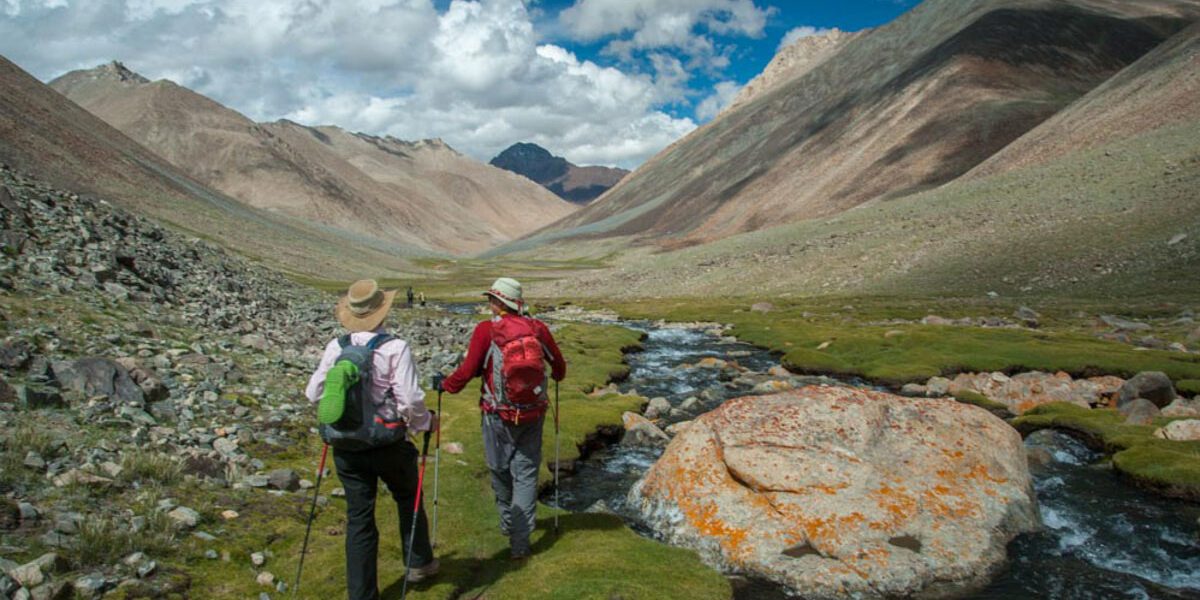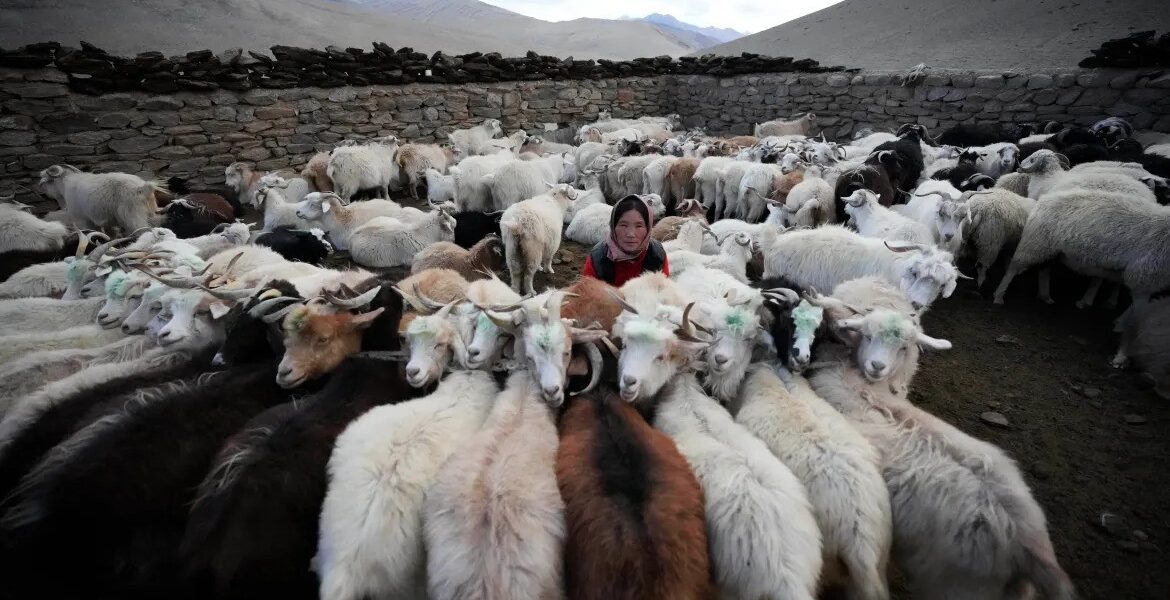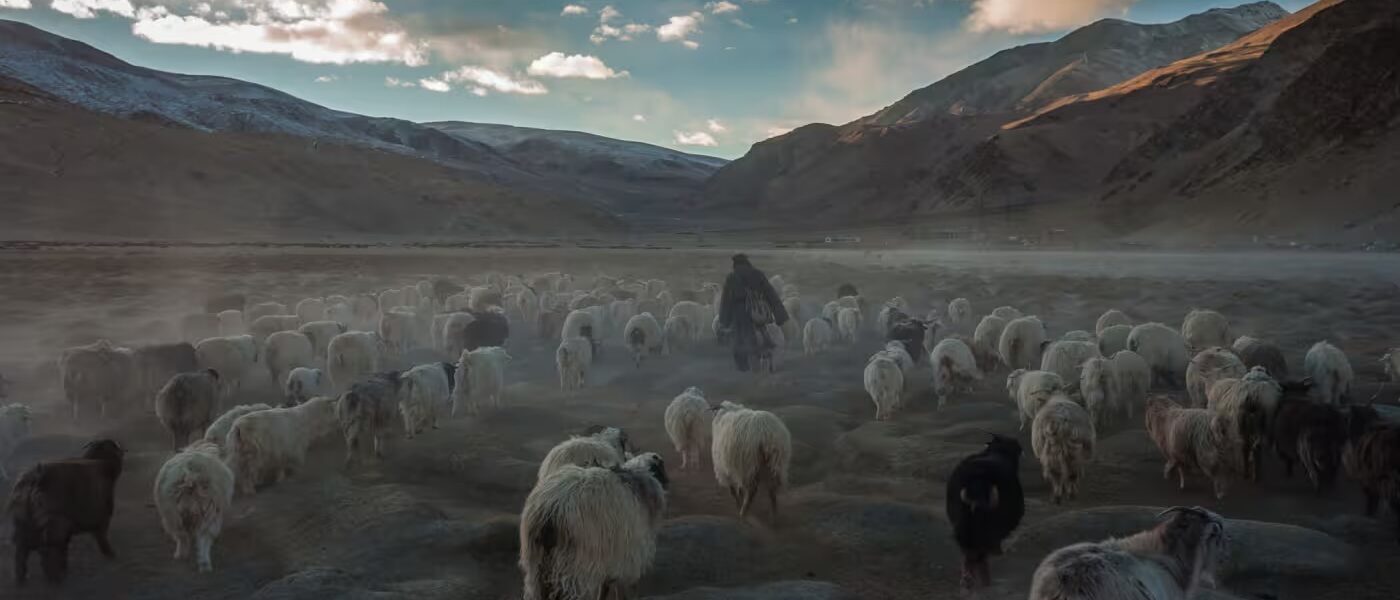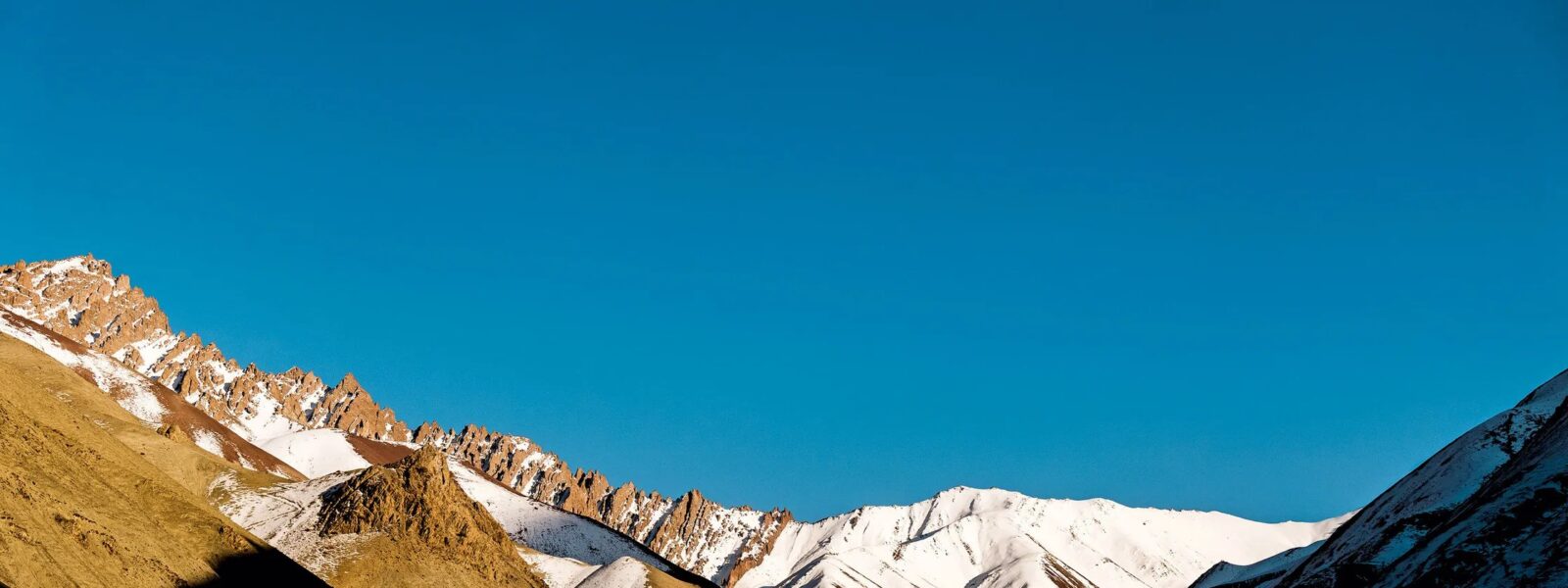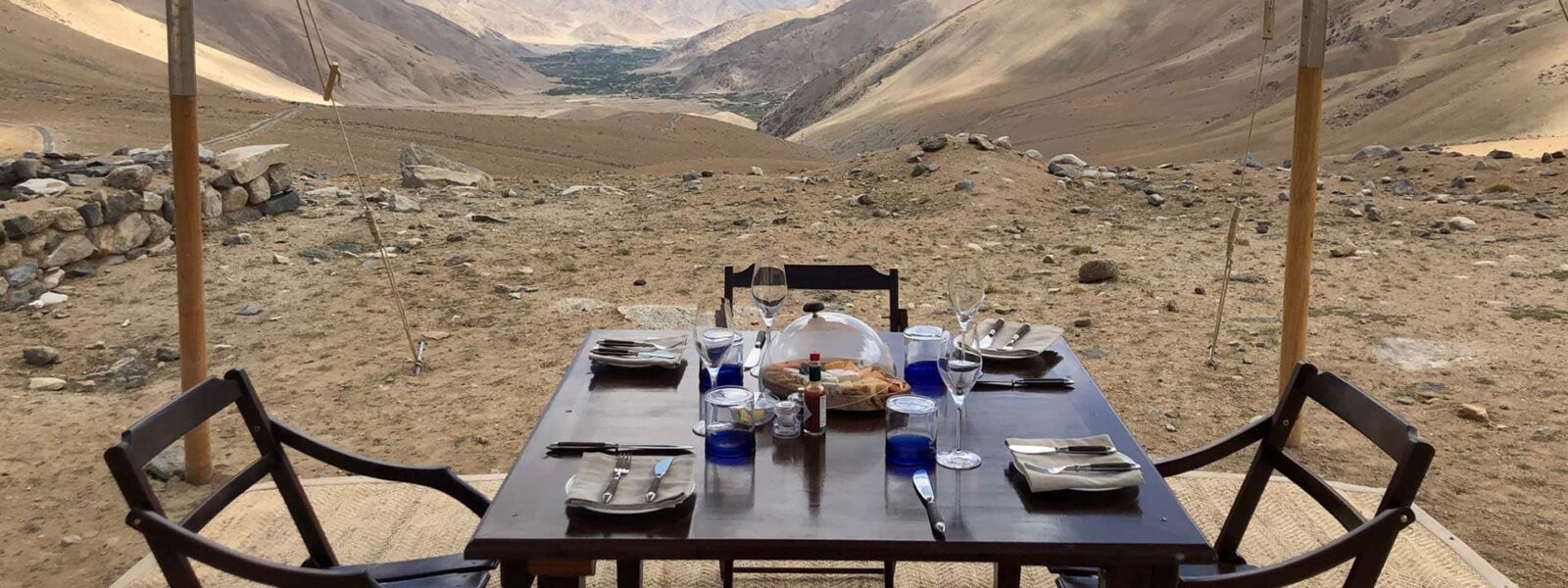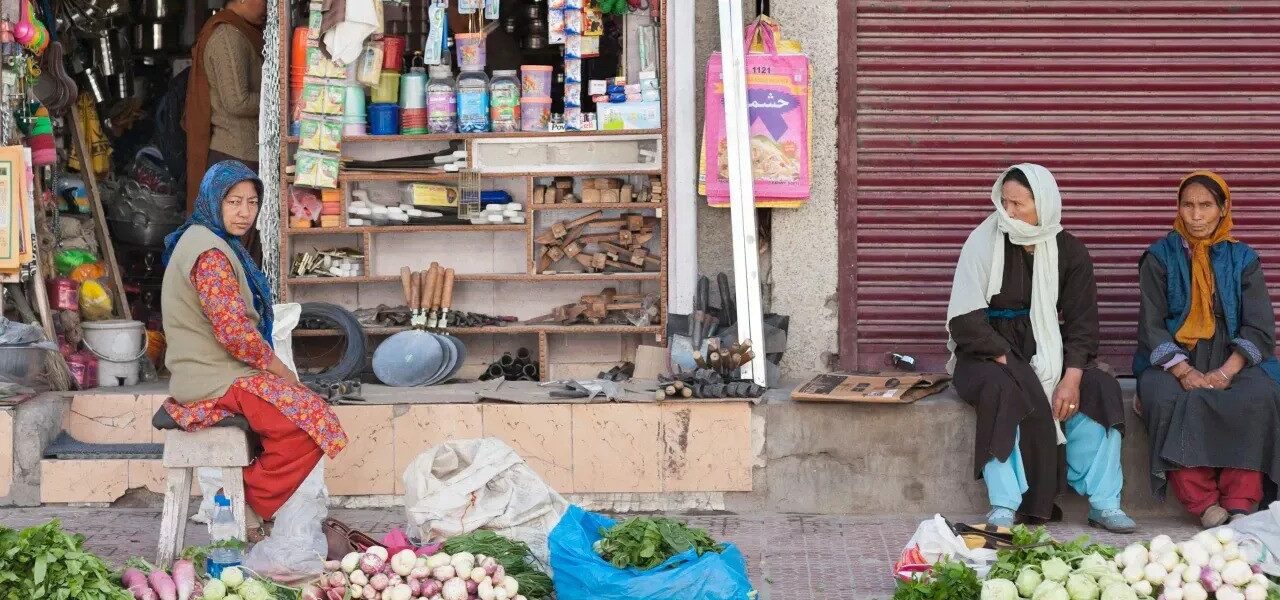Ladakh, a mesmerizing realm cradled by the Himalayas, captivates with its dramatic desert landscapes, ancient monasteries perched on cliffs, and a stillness that drowns out the digital world. This isn’t your average trekking spot—it’s a sanctuary for those craving a break from constant connectivity. Ladakh trekking off the grid offers a rare chance to hike through untouched wilderness, where no Wi-Fi signals reach and the only network is nature itself. In this ultimate guide to off-grid trekking in Ladakh, we’ll dive into why this region stands out, explore top trails, and equip you with everything needed to plan your unplugged adventure. Get ready to swap screens for serenity in one of the world’s most remote corners.
Why Choose Ladakh for an Off-Grid Trekking Adventure?
Ladakh’s isolated valleys and towering peaks make it a dream for adventurers seeking an unplugged escape. Far from bustling cities and buzzing phones, this Himalayan wilderness invites you to explore its rugged trails and rediscover the joy of disconnection. Whether it’s the vast emptiness or the promise of solitude, Ladakh offers a trekking experience that’s as raw as it is rewarding.
The Allure of No Internet in the Himalayan Region
Trekking in Ladakh with no internet connection is like stepping into a world where time slows down. The Himalayan region’s high-altitude desert trekking strips away the distractions of modern life, leaving you with nothing but the wild expanse ahead. Picture this: you’re hiking along a rocky path, the wind carrying faint echoes from a distant monastery, while the absence of Wi-Fi lets you truly hear the silence. This tech-free trekking isn’t just a getaway—it’s a mental reset. Studies suggest that unplugging boosts focus and reduces stress, and Ladakh’s pristine nature treks amplify that effect. You’ll spot yaks grazing on sparse plains, marvel at snow-dusted peaks, and camp under a sky so clear it feels infinite. Unlike urban escapes, this no-Wi-Fi adventure demands your presence, turning every moment into a vivid memory. For those seeking a break from the digital grind, Ladakh’s signal-free trails are a rare gift.
The lack of connectivity here isn’t a flaw—it’s the feature. Without notifications pinging, you’re free to absorb the stark beauty of the landscape: barren cliffs, winding rivers, and the occasional flutter of prayer flags. It’s a chance to trade scrolling for stargazing, emails for elevation. Whether you’re crossing a high pass at 4,000 meters or resting by a gurgling stream, the allure lies in the freedom to disconnect. This isn’t just a hike; it’s a journey into the wilds where the only network is the one you build with nature. Ladakh’s off-grid charm makes it a top pick for adventurers craving solitude and a taste of the untamed.
Escaping to the Untamed Land of Little Tibet
Ladakh, affectionately dubbed Little Tibet, is an untamed land where exploring feels like a pilgrimage to a forgotten era. Roaming its isolated trails, you’ll encounter a wilderness that’s as raw as it gets—think jagged peaks piercing the sky and vast plains stretching to the horizon. This isn’t a polished tourist trap; it’s a pristine nature trek through a moonscape where ancient traditions still thrive. The rugged beauty of this Himalayan outpost hits you hard: ochre cliffs glow in the sunlight, monasteries cling to impossible heights, and the silence wraps around you like a blanket. For those yearning to escape the chaos of connectivity, Ladakh’s offbeat trails deliver pure solitude.
Unlike mainstream destinations, this mountain kingdom offers raw nature experiences that feel untouched by time. You might wander past a shepherd guiding his flock or stumble upon a weathered stupa, each sight a reminder of Ladakh’s enduring spirit. The barren Himalayan beauty here isn’t just scenery—it’s a canvas for adventure. Hiking through this far-flung region, you’ll feel the weight of the world lift, replaced by the lightness of being truly unplugged. It’s a soulful retreat where every step deepens your connection to the wilds. Whether you’re tracing a path through the Trans-Himalaya or pausing to breathe in the crisp air, Ladakh’s untamed allure makes it the ultimate off-grid escape.
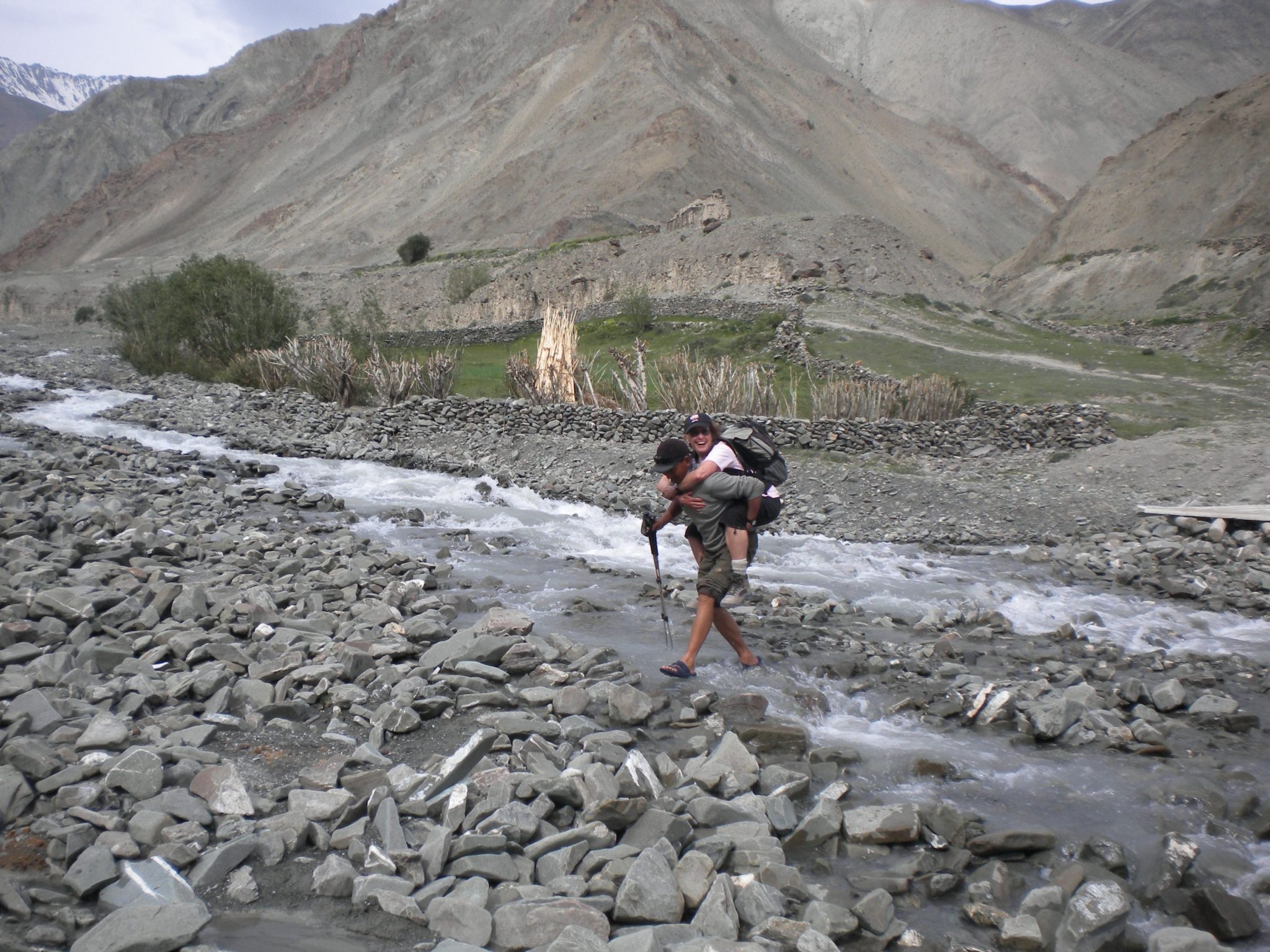
Top Off-Grid Trekking Routes in Ladakh
Ladakh’s remote trekking routes are the backbone of its off-grid appeal, plunging you into a Himalayan wilderness where civilization fades away. These trails promise solitude, stunning vistas, and a total break from connectivity. Below, we’ve detailed the best off-grid trekking routes in Ladakh—each a unique adventure waiting to be explored.
Markha Valley: A Wilderness Journey Without Wi-Fi
The Markha Valley trek is a wilderness journey without Wi-Fi that defines off-grid trekking in Ladakh. This Markha Valley off-grid trekking itinerary spans 6–8 days, weaving through rugged mountain trails and high passes that test your grit and reward your senses. With no internet to interrupt, you’ll hike across rocky slopes, ford icy streams, and camp in secluded meadows framed by towering peaks. The valley’s stark beauty is unforgettable: golden plains stretch beneath snow-capped summits, while the silence amplifies every sound—the crunch of gravel, the rush of wind. Tiny villages like Markha and Hankar dot the route, offering a glimpse into Ladakhi life untouched by modernity, with mud-brick homes and fluttering prayer flags.
Nights here are magical, with no light pollution to dim the stars—perfect for stargazing after a day on the trail. The trek peaks at Kongmaru La pass (5,200m), where panoramic views steal your breath before a descent into verdant pastures. This isn’t a stroll; it’s a rugged terrain trek demanding sturdy boots and a love for the wilds. Without Wi-Fi, you’re fully immersed, noticing details like wildflowers poking through rock or the distant call of a marmot. Ideal for those craving a no-internet escape, Markha Valley blends challenge with serenity, making it a top pick for adventurers seeking Ladakh’s rawest corners.
Zanskar Valley: Hiking the Remote Himalayas
Zanskar Valley offers a high-pass trekking experience that’s the epitome of a wild Himalayan escape. Backpacking through this far-flung region, you’ll hike trails where connectivity is a distant memory, plunging into the remote Himalayas with every step. Spanning 8–10 days, this rugged terrain trek winds through deep gorges, past crumbling monasteries, and alongside the roaring Zanskar River. The landscape is dramatic: sheer cliffs loom overhead, frozen waterfalls glisten in winter, and vast plains stretch into the distance. Villages like Lingshed, perched at dizzying altitudes, reveal a life unplugged from the world—think yak herders and stone huts dwarfed by the mountains.
The silence here is profound, broken only by the wind or the crunch of your boots on rocky paths. Zanskar’s isolation makes it a true off-grid adventure—cell signals don’t reach these heights, leaving you free to soak in the wilds. The trek’s highlight, the Shingo La pass (5,090m), offers sweeping views of jagged peaks before dropping into secluded valleys. It’s not for the faint-hearted; steep ascents and unpredictable weather demand stamina and preparation. Yet, the reward is a disconnected journey through some of Ladakh’s most untouched terrain. For adventurers seeking solitude and a taste of the backcountry, Zanskar Valley is an unmatched off-grid haven.
Nubra Valley: A Desert Mountain Adventure Unplugged
Nubra Valley is a desert mountain adventure unplugged, blending off-grid serenity with Ladakh’s wild diversity. This Ladakh adventure off-grid begins with a drive over Khardung La (5,359m), one of the world’s highest motorable passes, before dropping into a high-altitude desert of sand dunes and Bactrian camels. With no Wi-Fi to distract, you’ll hike through barren Himalayan beauty where snow-capped peaks tower over golden sands—a surreal contrast that defines Nubra. The trek to villages like Hunder or Diskit (4–6 days) mixes natural wonders with cultural gems, from ancient gompas to warm locals living far from urban sprawl.
This route is less grueling than Zanskar, making it ideal for those craving an unplugged escape without extreme exertion. The lack of connectivity enhances every moment—whether you’re wandering past orchards or pausing to watch the Shyok River carve through the valley. Nights bring clear skies and a stillness that feels otherworldly, perfect for camping in Ladakh’s wilds. Nubra’s seclusion and unique landscapes prove that off-grid doesn’t mean missing out; it’s a chance to explore a moonscape where nature reigns supreme. For a desert twist on Himalayan trekking, Nubra Valley delivers an unforgettable no-internet journey.
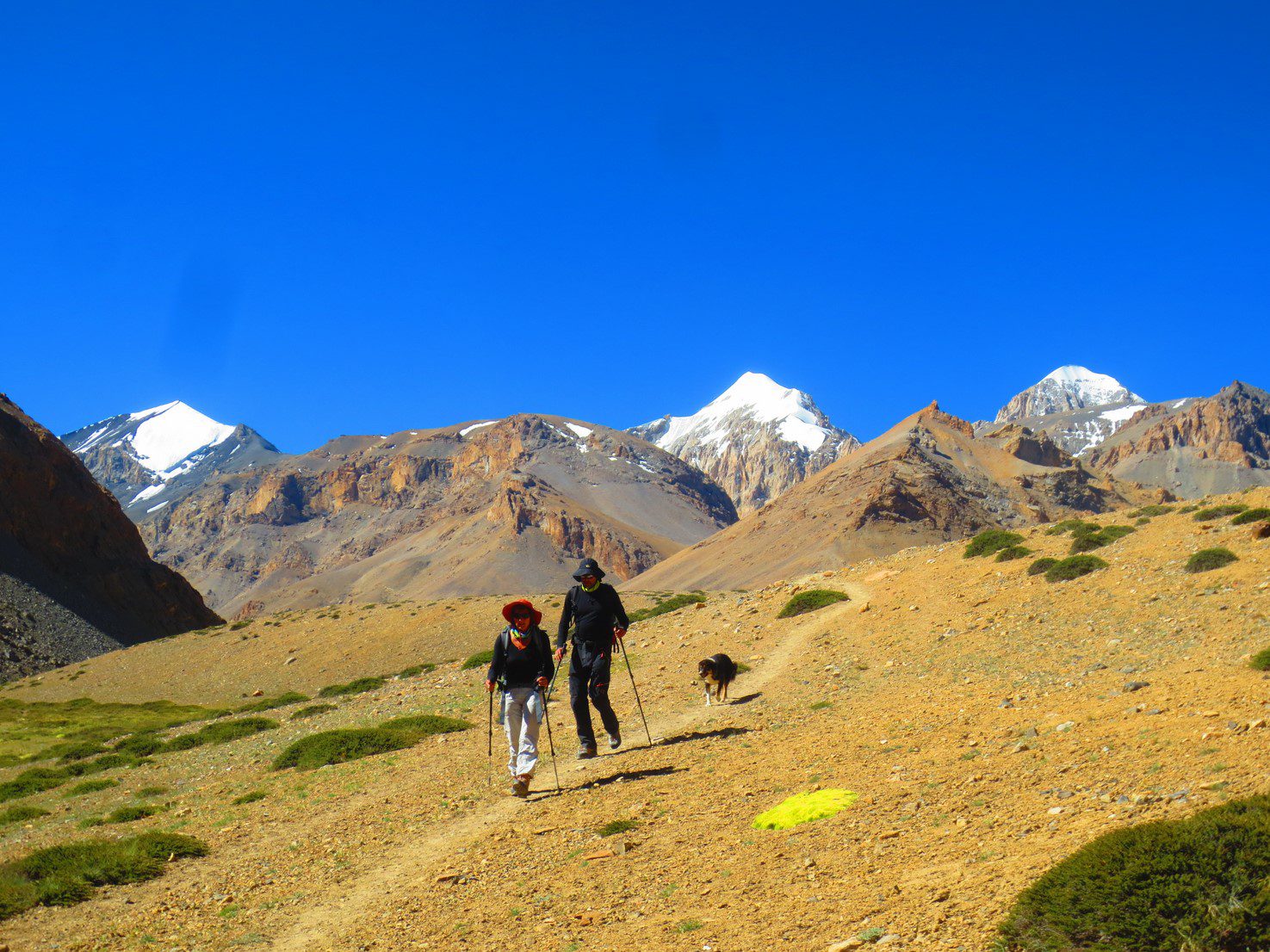
The Digital Detox Experience of Trekking in Ladakh
Trekking in Ladakh is more than a physical challenge—it’s a mental cleanse. The digital detox trekking Ladakh offers peels away the layers of modern noise, leaving you with the wilderness and your thoughts. Here’s how this no-internet adventure rewires your soul.
Finding Peace in a Signal-Free Wilderness
How to disconnect on a Ladakh trek? It’s simple: step into its signal-free wilderness and let nature take over. Ladakh’s serene trekking trails—like those in Sham Valley or Changthang—offer a mindful travel experience that calms the mind. Without Wi-Fi, your senses come alive: the scent of juniper fills the air, prayer flags rustle overhead, and the vast Himalayan horizon stretches endlessly. Science backs this up—time in nature lowers cortisol levels, and Ladakh’s isolation doubles that effect. Imagine sipping tea by a campfire, your phone forgotten, as the stillness settles in. This isn’t just hiking; it’s a chance to reconnect with yourself amid pristine landscapes.
Trails here are a balm for the overstimulated. No pings, no updates—just the rhythm of your steps and the beauty of the wilds. Whether you’re tracing a path past a remote gompa or resting in a meadow, the absence of connectivity fosters peace. It’s a soulful retreat where the lack of tech becomes a luxury, not a limitation. For those seeking a break from the digital deluge, Ladakh’s no-connectivity trails offer a rare chance to find clarity and calm in a world that’s always on.
Immersing in Nature Without Network Distractions
Roaming Ladakh’s raw outdoors without network distractions is the ultimate nature immersion trek. Whether you’re exploring the Indus Valley or climbing high-altitude paths, the lack of connectivity forces you to live in the moment. No emails interrupt the crunch of gravel underfoot; no notifications drown out the call of Himalayan birds. This disconnect-to-reconnect mindset shines here: you’ll notice wildflowers breaking through rock, the play of light on distant peaks, or the scent of earth after a rare rain. Campsites become sanctuaries—no glowing screens, just stories shared under a starlit sky. It’s a gadget-free retreat that rewires your brain, swapping digital noise for nature’s symphony.
The absence of Wi-Fi turns every hike into a sensory feast. You’re not just passing through—you’re part of the wilds, fully present in a way that’s impossible with a phone in hand. This offline wilderness journey strips away the superficial, leaving room for reflection and awe. Whether it’s the vastness of Changthang’s plateau or the quiet of a riverside camp, Ladakh’s no-internet trails offer an unmatched chance to unplug and recharge. For adventurers craving true immersion, this tech-free Himalayan trek is a revelation.
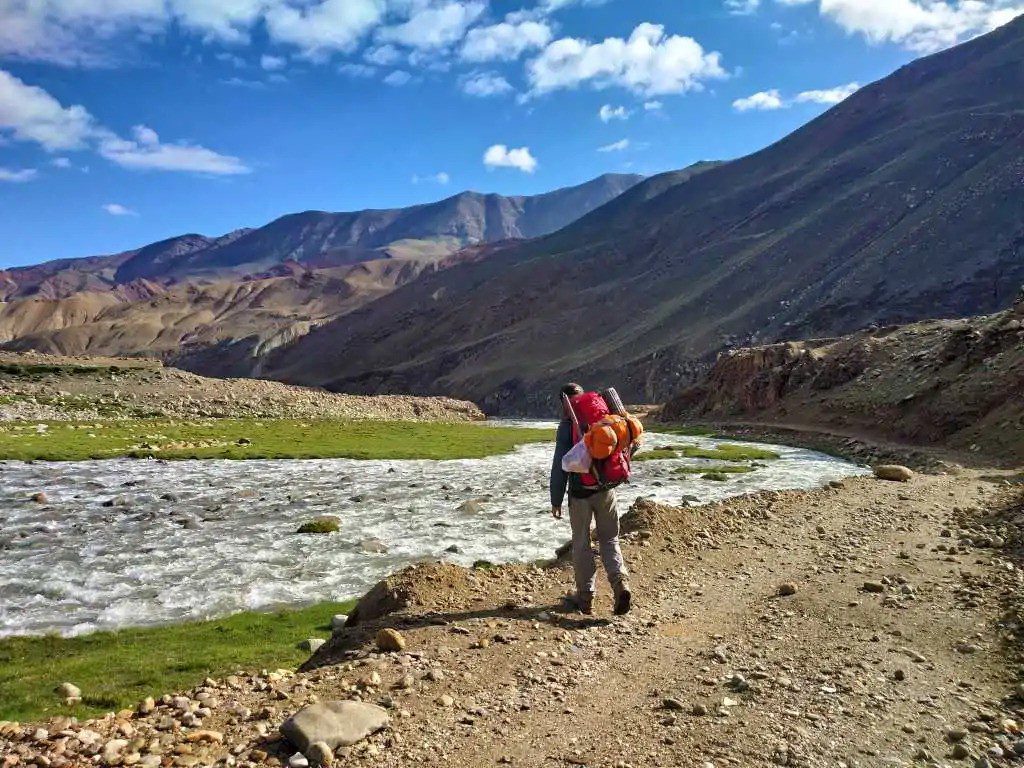
How to Plan Your Off-Grid Trekking Escape in Ladakh
Planning an off-grid adventure in Ladakh requires some foresight, but the payoff is a seamless plunge into the wilds. From timing your trip to packing smart, here’s your roadmap to a no-Wi-Fi trek in this Himalayan gem.
Best Time for a No-Wi-Fi Trek in the High Desert
Trekking in Ladakh without internet shines brightest from June to September, the prime Ladakh trekking season. These months bring clear skies, open trails, and a high desert alive with subtle beauty—perfect for a no-Wi-Fi trek. June offers crisp days and wildflowers dotting the plains, while September paints the landscape in golden hues with cooler temps. Summer highs hover around 20°C, though nights dip low, so layered clothing is key. Winter (December–February) transforms Ladakh into a frozen wonderland, but many routes close, and temps plummet to -20°C—tough for all but the hardiest. Spring (April–May) opens lower trails, though snowmelt can muddy high passes.
For the best time for off-grid trekking in Ladakh, summer wins for accessibility and comfort. Monsoon rains barely touch this rain-shadow region, keeping paths dry while the rest of India soaks. Still, check local forecasts—sudden snow or wind can shift plans fast. September’s quieter trails add an extra layer of solitude to your unplugged escape. Timing it right ensures you maximize the wilderness without battling the elements, making your no-internet journey as smooth as it is stunning.
Packing Tips for a Tech-Free Himalayan Journey
Expeditioning through Ladakh’s Trans-Himalaya demands smart packing for a gadget-free retreat. Start with a 50L backpack, layered clothing (thermals, fleece, windproof jacket), and trekking boots built for rugged terrain treks. Nights in this high desert drop below freezing—think Markha Valley camps—so a sleeping bag rated to -10°C is essential. A water purifier is non-negotiable; streams are your lifeline, and bottled water isn’t an option out here. Skip the tech—no Wi-Fi means no chargers or gadgets, freeing space for a journal to jot down your eco-friendly trekking reflections. A solar lantern lights up starlit nights without draining batteries.
Sun protection is critical—UV rays at 4,000m+ are fierce, so pack sunscreen, sunglasses, and a wide-brimmed hat. For camping in Ladakh, a lightweight tent and portable stove keep you self-sufficient. High-energy snacks like nuts, dried fruit, and chocolate fuel long days on the trail. Gloves, a scarf, and a first-aid kit round out the essentials, covering cold snaps and minor scrapes. Pack light but smart—every ounce counts when you’re hiking off-grid. This gear ensures you’re ready for the wilds without relying on anything but nature.
Safety Tips for Remote Trails in the Mountain Kingdom
Safety tips for remote trekking in Ladakh begin with acclimatization—spend 2–3 days in Leh (3,500m) to adjust, sipping water and resting to dodge altitude sickness. Backcountry trekking here means no quick help, so a first-aid kit with Diamox (for altitude) and basics like bandages is a must. Stick to marked paths—getting lost in rugged terrain treks is a real risk, and no cell service means no SOS calls. Hydrate constantly; the dry air sucks moisture fast, and dehydration hits hard at altitude. Pack high-energy snacks—nuts, granola—to keep stamina up on long hauls.
Weather shifts fast, so check conditions daily and avoid solo trekking on tough routes like Zanskar. Layer up for sudden cold snaps, and don’t push through storms—shelter up instead. Tell someone your itinerary; with no connectivity, it’s your lifeline. Respect the wilds—don’t disturb wildlife or sacred sites like monasteries. Altitude can slow you down, so pace yourself and listen to your body. With these steps, your off-grid hike in the mountain kingdom stays safe and thrilling, letting you focus on the adventure ahead.
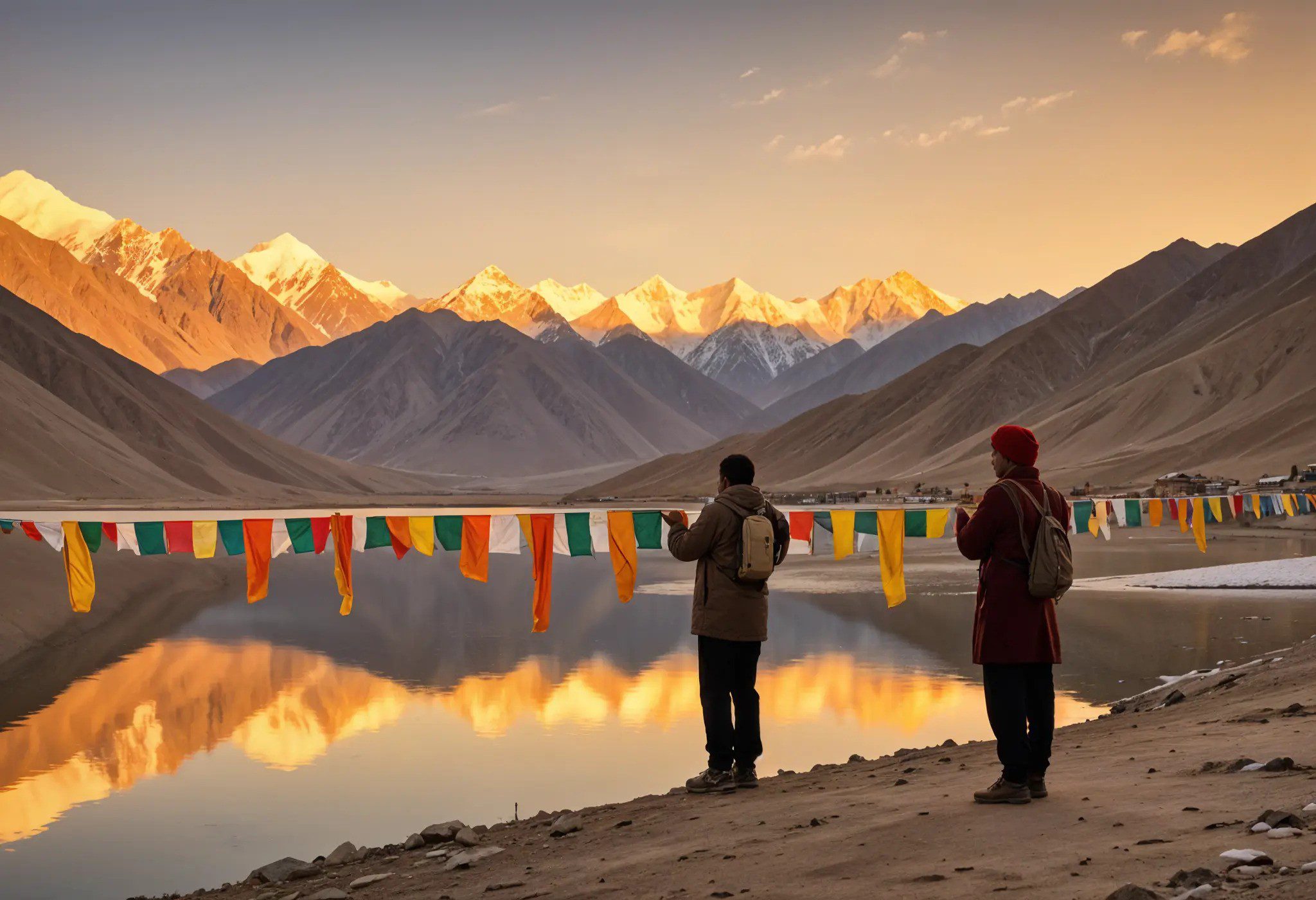
Conclusion: Embrace the Wilds of Ladakh Without Wi-Fi
Ladakh trekking off the grid isn’t just a hike—it’s a dive into the wilds where Wi-Fi fades and nature takes center stage. From the unplugged trails of Markha Valley to the desert sands of Nubra, every step offers a soulful Himalayan trek that lingers in your bones. These unforgettable off-grid hikes ditch the digital chatter for the raw outback of Little Tibet, trading screens for a screen break under starlit skies. Whether it’s the rush of high passes or the calm of a tech-free night, wilderness trekking Ladakh delivers an adventure that’s as refreshing as it is rare. Ready to leave the noise behind? Plan your escape today and embrace a world unplugged.
Don’t wait—book your trek, pack your gear, and step into Ladakh’s no-Wi-Fi wilderness for an epic adventure!
FAQs
What Makes Ladakh Ideal for Off-Grid Trekking?
Ladakh’s remote location, thin population, and lack of connectivity make it a prime spot for off-grid trekking. Tucked in the Himalayas, its high-altitude deserts and secluded trails create a natural shield from modern distractions. Routes like Zanskar and Markha plunge you into rugged landscapes where Wi-Fi can’t reach, ensuring a true digital detox. The barren expanse—dotted with monasteries and vast plains—heightens the unplugged experience, appealing to adventurers craving solitude and raw nature. Add in the crisp air, star-filled nights, and a culture untouched by urban sprawl, and Ladakh stands out as an ideal escape into the wilds.
How Long Should I Plan for a No-Wi-Fi Trek in Ladakh?
Most no-Wi-Fi treks in Ladakh range from 4–10 days, depending on your route. Nubra Valley might take 4–6 days, while Zanskar stretches to 10. Add 2–3 days in Leh for acclimatization to handle the altitude—rushing risks sickness. Buffer days for weather or rest are smart; remote trails don’t forgive delays. A 7–10-day trip strikes a sweet spot, balancing adventure with prep time to soak in the wilderness. Summer months (June–September) offer the best window, with open paths and clear skies for your unplugged journey.
Can Beginners Try Off-Grid Trekking in Ladakh?
Yes, beginners can tackle off-grid trekking in Ladakh with proper prep. Gentler routes like Sham Valley or shorter Nubra hikes offer moderate climbs and stunning views without extreme demands. Acclimatize in Leh for 2–3 days, join a guided group, and stick to summer for safer conditions. Build stamina with pre-trip walks—altitude tests even fit novices. With these steps, Ladakh’s wilds welcome all, delivering a no-Wi-Fi adventure that’s as approachable as it is awe-inspiring.

